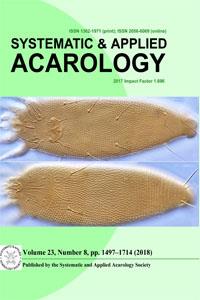The present paper deals with two new species of oribatid mites of the genus Scapheremaeus Berlese, 1910 from the subtropical islands in Southern Japan. Scapheremaeus nakanoshimensis sp. nov. and Scapheremaeus boninensis sp. nov. are proposed on the basis of adults. Furthermore, we present data on distribution, diversity and habitat ecology of all known species of Scapheremaeus in Japan, and a key is provided for identification of hitherto recorded species in this country. Majority of Scapheremaeus species found in Japan are known to be restricted to areas of Southern Japan and Eastern China. Only one of the species has a relatively broad distribution in South America and East Asia. Most species of Scapheremaeus in Japan are inhabitants of soil and litter of various forests, and mosses growing on rocks, but few of them are arboreal. The D3 fragments of the 28S rRNA (28S D3) and 18S rRNA genes of Scapheremaeus nakanoshimensis sp. nov. are sequenced and data are available in the sequence database. Comparison of the 28S D3 gene sequence of Scapheremaeus nakanoshimensis sp. nov. with other oribatid mites gene sequences identifies that the representatives of Scutoverticidae (Scutovertex, Provertex, Exochocepheus) and Eremaeozetidae (Eremaeozetes), Ameronothridae (Ameronothrus) and Phenopelopidae (Eupelops) are the closest relatives to Scapheremaeus with regard to the species included in this analysis.
How to translate text using browser tools
30 July 2018
Two new species of Scapheremaeus from Southern Japan (Acari: Oribatida: Cymbaeremaeidae), with genetic information
Badamdorj Bayartogtokh,
Shimpei F. Hiruta,
Satoshi Shimano
ACCESS THE FULL ARTICLE

Systematic and Applied Acarology
Vol. 23 • No. 8
August 2018
Vol. 23 • No. 8
August 2018
biogeography
gene sequence
habitat ecology
morphology




